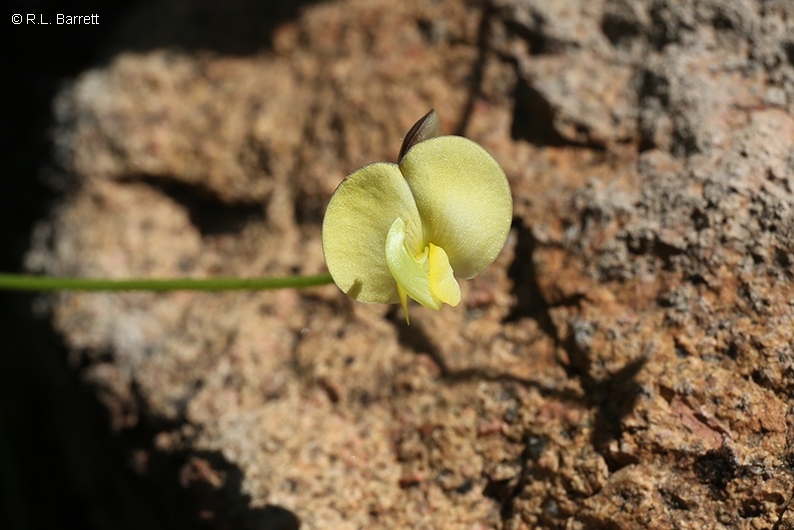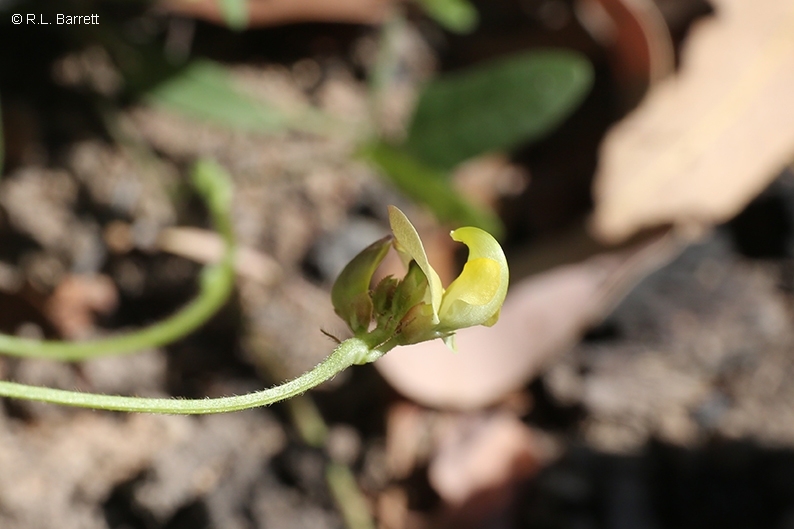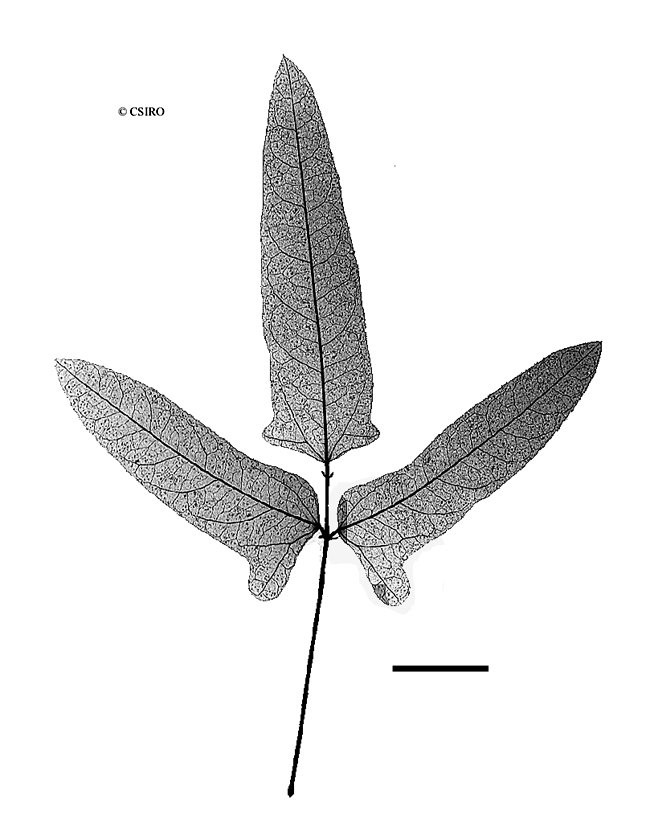Australian Tropical Rainforest Plants - Online edition
Vigna sp. Station Creek (R.J.Lawn CEQ3284) Benth.





Provisional HISPID phrase name.
Yam; Maloga Bean; Bean, Native; Bean, Maloga; Native Bean
A slender vine not exceeding a stem diameter of 2 cm.
Leaflet blades about 2.5-9 x 0.6-3 cm, leaflet stalks about 0.1-1.6 cm long. Middle leaflet longer than the lateral leaflets. Lateral veins about 8-11 on each side of the midrib. Stipules hairy, about 2-3 mm long, broadly lanceolate, peltate. Stipels present, about 1 mm long. Most leaflets usually exhibit a small or large basal lobe. Upper and lower leaflet blade surfaces clothed in hairs.
Mature fruits curved, cylindrical before dehiscence, about 30-40 x 3-4 mm. Valves twisting during dehiscence, outer surface dappled pale and dark brown, clothed in short dark hairs. Seeds 4-6 per fruit, each seed ellipsoid to oblongoid, about 4.5 x 2.5 mm. Testa surface mottled brown. Radicle about 1-1.5 mm long, much shorter and narrower than the cotyledons.
First leaves narrowly cordate to sagittate. Leaves unifoliolate, stipels present. Third leaf trifoliolate. At the tenth leaf stage: leaflet blades lobed towards the base, middle leaflet with a large lobe on each side, lateral leaflets with a large lobe on one side only. Leaflets three-veined at the base, midrib raised on the upper surface, lateral veins curving inside the blade margin but not forming definite loops. All plant parts densely clothed in long bristly hairs, plants twining. Pulvinus and stipels present on the middle leaflet, stipels only present on the lateral leaflets. Stipules 3-3.5 mm long, peltate, hairy and longitudinally veined. Leaflet blades apiculate at the apex, base cuneate. Lateral leaflet blades asymmetrical. Lateral veins about 6-8 on each side of the midrib. Midrib raised on the upper surface. Seed germination time 124 to 167 days.
Occurs in NT and NEQ. Altitudinal range in northern Australia from near sea level to 750 m. Usually grows in open forest but also found in vine thicket and monsoon forest.
A very palatable species which nodulates when conditions are favourable but which may become a weed of cultivation. Roots are roasted and eaten by Aborigines. Hacker (1990).





